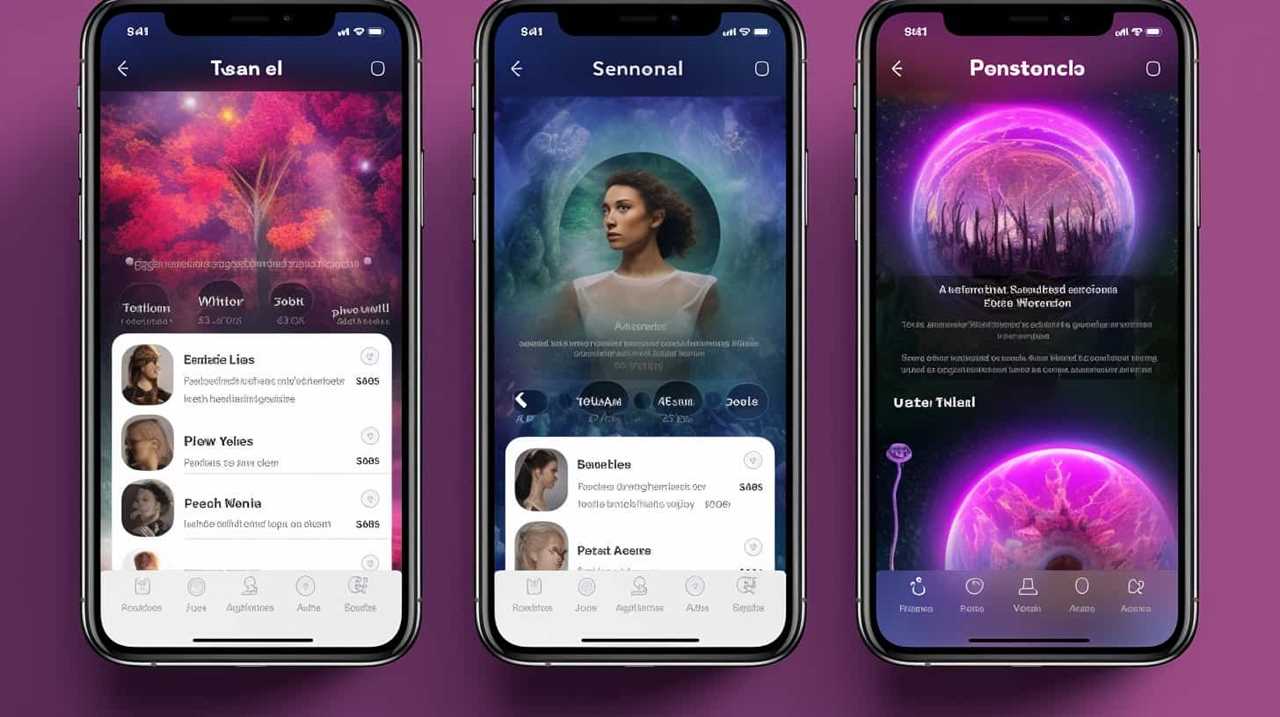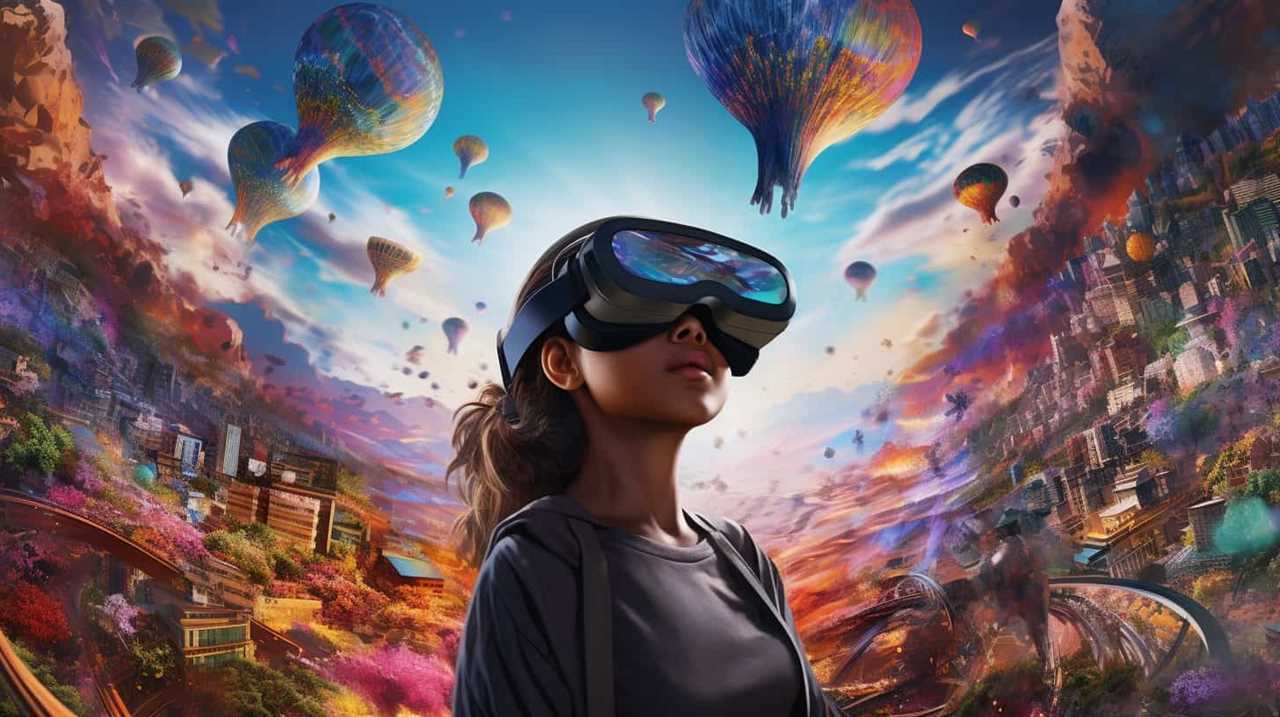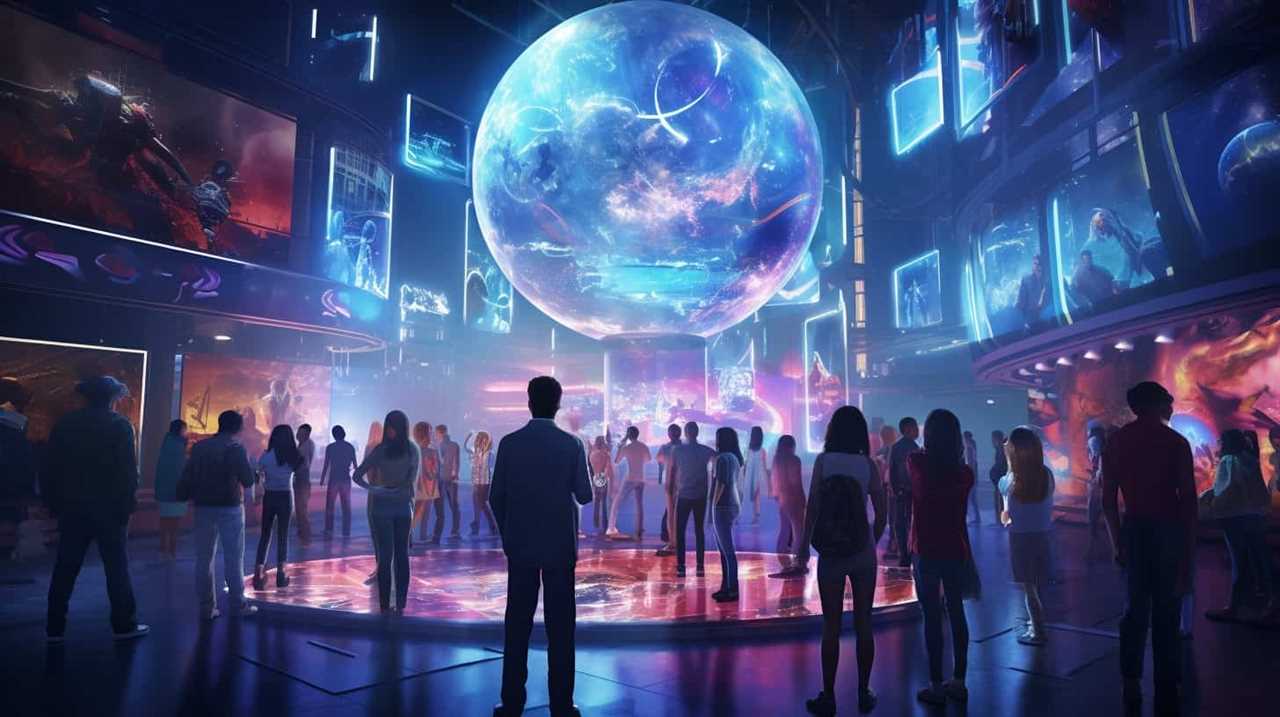Welcome to our study of the inventive capabilities of generative AI.
As technology continues to advance at an unprecedented pace, we find ourselves on the cusp of a groundbreaking era in art and design.
In this article, we will delve into the exciting possibilities that generative AI offers for enhancing storytelling, pushing the boundaries of creativity, and transforming the way we approach artistic expression.
Join us as we unlock the potential of this cutting-edge technology and embrace the limitless innovative opportunities it presents.

Key Takeaways
- Generative AI harnesses algorithms to create new and original content in various fields such as art, music, writing, and design.
- It enables the generation of visually stunning art, new melodies in music, compelling stories and poems in writing, and visually appealing visuals in design.
- Generative AI can be implemented in fashion and architecture to create unique and personalized designs and innovative structures respectively, addressing sustainability concerns and enhancing customer satisfaction.
- Ethical considerations include issues of bias, ownership, consent, data privacy, and the potential displacement of human designers.
Understanding Generative AI Basics
To understand the basics of generative AI, we need to start with a clear definition of its purpose and functionality. Generative AI refers to the use of algorithms to create new and original content, such as images, music, or text. These algorithms are designed to learn from existing data and generate new outputs that mimic the style and patterns of the training data.
The applications of generative AI are vast and exciting. It can be used in various fields, including art, design, entertainment, and even scientific research. Generative AI algorithms have the potential to automate creative tasks, assist in content generation, and inspire innovation.
However, it’s important to approach generative AI ethically, considering issues such as bias, ownership, and consent. By understanding the basics of generative AI, we can harness its creative power and unlock new possibilities for innovation.
Exploring Creative Possibilities
We can now explore the creative possibilities of generative AI. This technology offers a vast array of innovative techniques that can unleash our imagination and push the boundaries of creativity. By harnessing the power of algorithms and machine learning, generative AI can generate unique and original content across various domains such as art, music, writing, and design.

To illustrate the potential of generative AI, consider the following table:
| Domain | Creative Possibilities |
|---|---|
| Art | Generating visually stunning and abstract pieces |
| Music | Composing new melodies and harmonies |
| Writing | Crafting compelling stories and poems |
| Design | Creating innovative and visually appealing visuals |
Exploring new techniques in generative AI allows us to tap into a world of endless possibilities. It enables us to collaborate with AI systems to co-create, inspire, and challenge our own creative capabilities. As we dive deeper into this field, we must also consider the ethical implications of using AI in creative processes and ensure that it enhances human expression rather than replacing it.
Implementing Generative AI in Art and Design
Let’s explore how we can implement generative AI in the fields of art and design.
Generative AI in fashion has the potential to revolutionize the industry by creating unique and personalized designs. With AI algorithms that can analyze customer preferences and generate new designs based on those preferences, fashion brands can offer a more personalized shopping experience. This not only enhances customer satisfaction but also addresses sustainability concerns by reducing overproduction.

Additionally, generative AI in architecture can aid architects in the design process by generating innovative and efficient structures. AI algorithms can analyze various factors such as environmental conditions, building materials, and client preferences to generate optimized designs. This can streamline the design process, improve energy efficiency, and enable architects to explore novel design possibilities.
However, ethical considerations such as data privacy and the potential displacement of human designers need to be carefully addressed when implementing generative AI in art and design.
Enhancing Storytelling With Generative AI
In the realm of storytelling, harnessing the creative power of generative AI offers exciting possibilities.
Interactive narratives and collaborative storytelling are two key areas where generative AI can enhance the storytelling experience. By using generative AI, storytellers can create interactive narratives that adapt and respond to user input, providing a personalized and engaging experience.

This technology allows for the creation of dynamic and immersive storylines that can evolve based on user choices and actions. Additionally, generative AI can enable collaborative storytelling, where multiple users can contribute to a story in real-time. This opens up new avenues for collective creativity, allowing for diverse perspectives and ideas to shape the narrative.
However, ethical considerations must be taken into account, such as ensuring fairness, inclusivity, and privacy in the creation and consumption of these AI-generated stories.
Pushing the Boundaries of Creativity With Generative AI
Expanding the possibilities of generative AI, we can push the boundaries of creativity even further. With the ability to explore music and generate poetry, generative AI opens up new avenues for artistic expression. By leveraging its computational power and pattern recognition abilities, generative AI enables us to delve into uncharted territories of music and poetry creation.
When it comes to exploring music, generative AI can analyze vast amounts of musical data to identify patterns and generate original compositions. This can lead to the discovery of unique melodies, harmonies, and rhythms that may have never been explored before. By pushing the boundaries of traditional music composition, generative AI can inspire musicians and composers to create innovative and experimental pieces.

Similarly, generative AI can generate poetry by analyzing large corpora of text and identifying linguistic patterns, metaphors, and rhythms. This can result in the creation of thought-provoking and emotionally engaging poems. By expanding the possibilities of poetic expression, generative AI can challenge conventional notions of what constitutes great literature.
However, ethical considerations must be taken into account when using generative AI for creative purposes. It’s essential to acknowledge and respect the intellectual contributions of human artists and ensure that generative AI is used as a tool to enhance human creativity, rather than replace it. Additionally, issues related to copyright and ownership of generative AI-generated creative works need to be carefully addressed to ensure fair attribution and protection of intellectual property.
Frequently Asked Questions
How Is Generative AI Different From Traditional AI?
Generative AI differs from traditional AI by its ability to produce original content, solve complex problems, and exhibit creative thinking. This allows for innovative applications in various fields, overcoming the limitations of traditional AI systems.
Can Generative AI Create Original and Unique Artwork?
Generative AI utilizes human input to create original and unique artwork. Its impact on the art industry is significant, revolutionizing the creative process. We can harness its creative power by embracing its ability to inspire and push artistic boundaries.

Are There Any Ethical Concerns Associated With Using Generative AI in Art and Design?
Ethical implications arise when using generative AI in art and design. It raises concerns about the impact on artists, as it blurs the line between human creativity and machine-generated art. Innovation demands careful consideration of these issues.
What Are Some Limitations or Challenges When Implementing Generative AI in Art and Design?
Implementing generative AI in art and design presents technical difficulties and raises concerns about copyright infringement. These challenges must be addressed to fully harness the creative power of AI and ensure ethical and innovative outcomes.
Can Generative AI Be Used to Create Interactive and Immersive Storytelling Experiences?
Yes, we can harness the creative power of generative AI to create interactive storytelling experiences that immerse users in new and innovative ways. It offers endless possibilities for engaging and immersive experiences.
Conclusion
As we delve into the world of generative AI, we uncover a realm of limitless creative possibilities. By harnessing the power of this technology, we can push the boundaries of art, design, and storytelling, elevating our creative endeavors to new heights.

Just like a master conductor guiding an orchestra, generative AI allows us to orchestrate a symphony of ideas, blending human creativity with machine intelligence. Together, we can create a harmonious fusion that amplifies our creative expression and challenges our perception of what’s possible.











